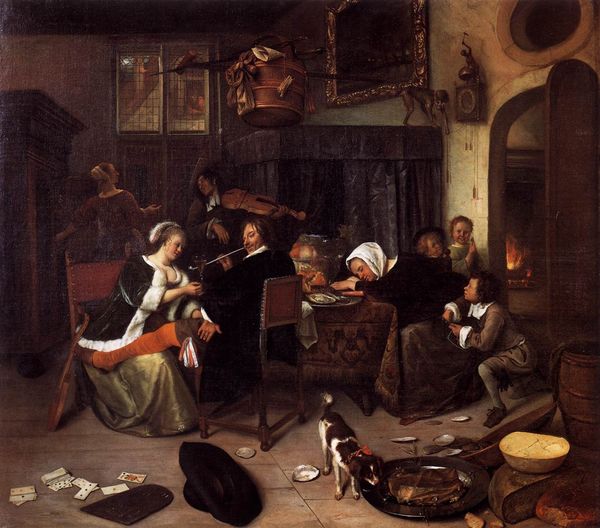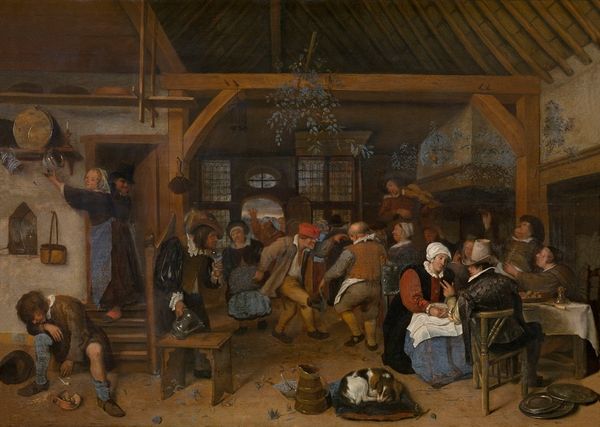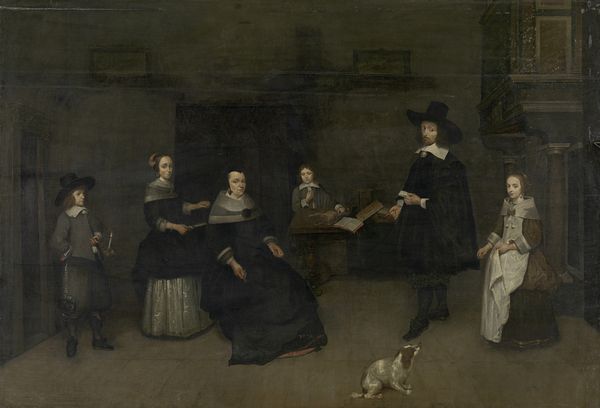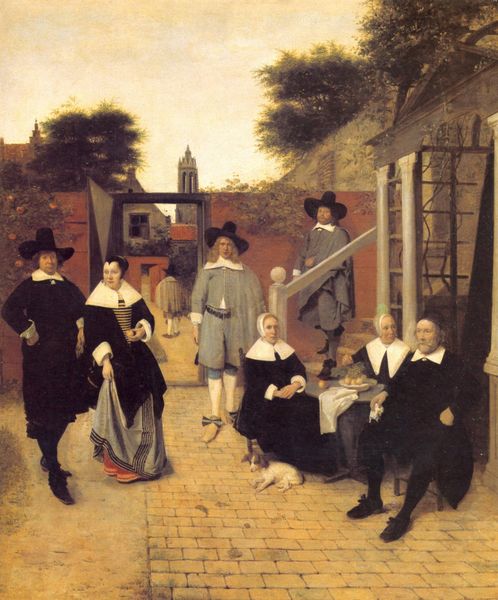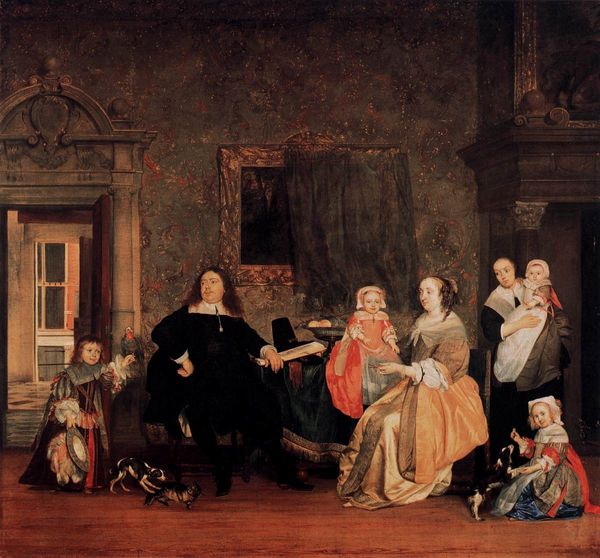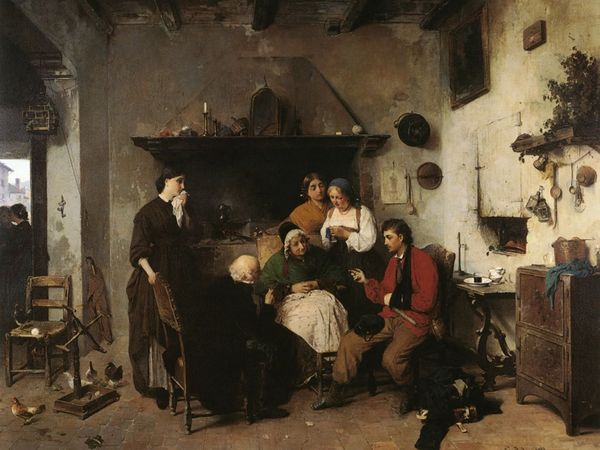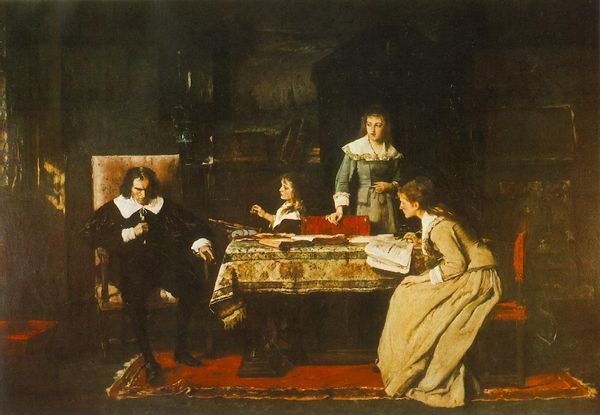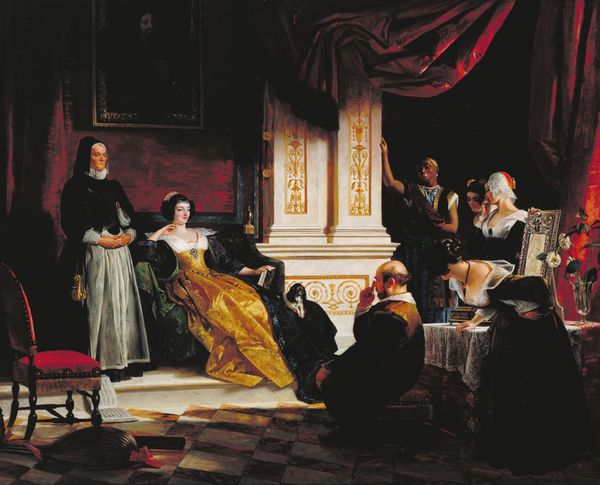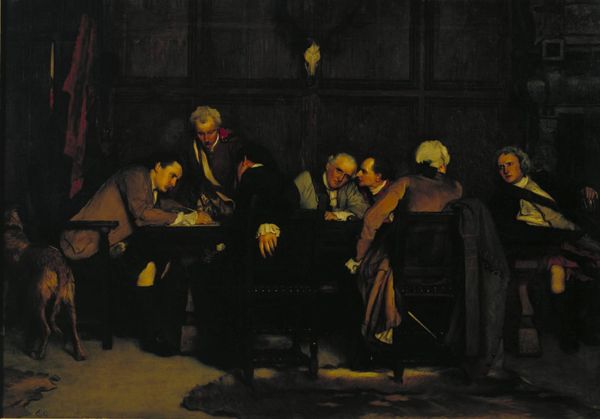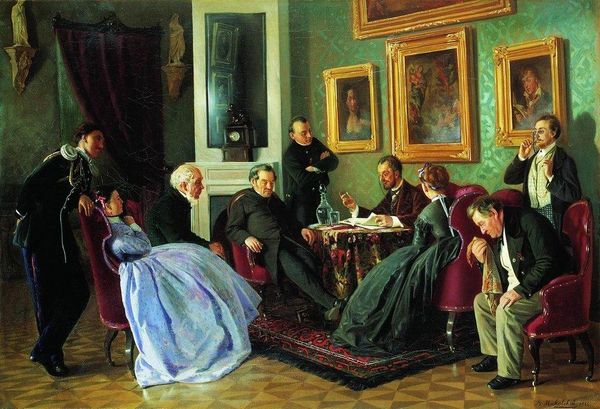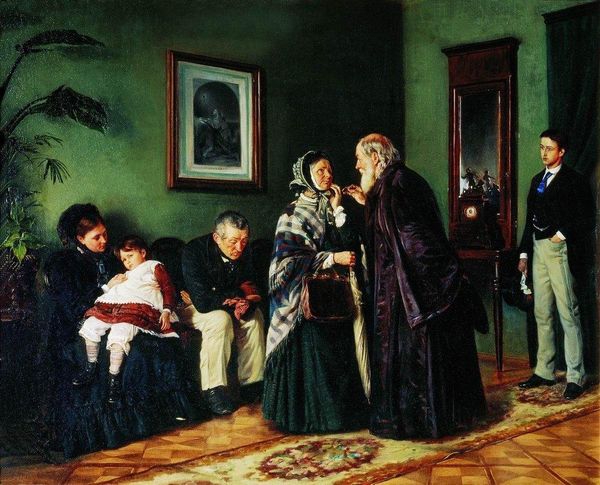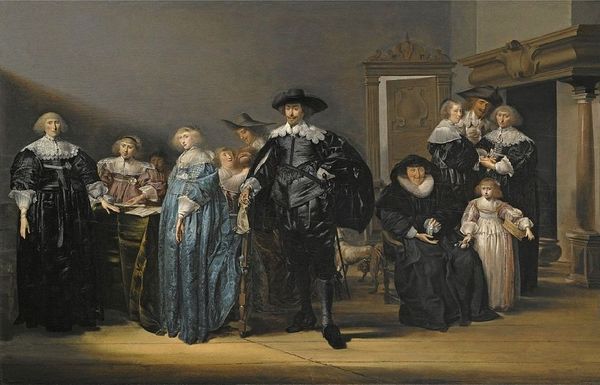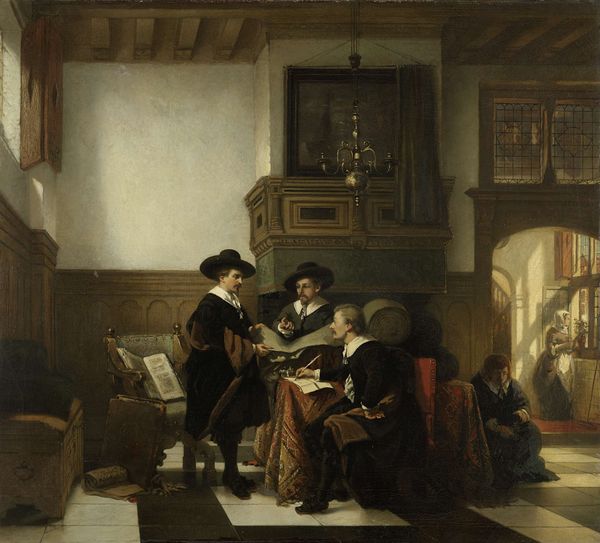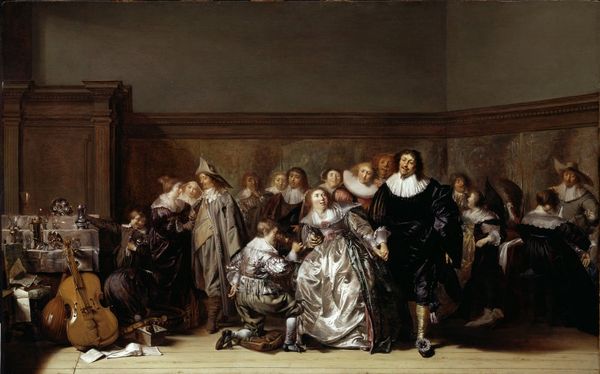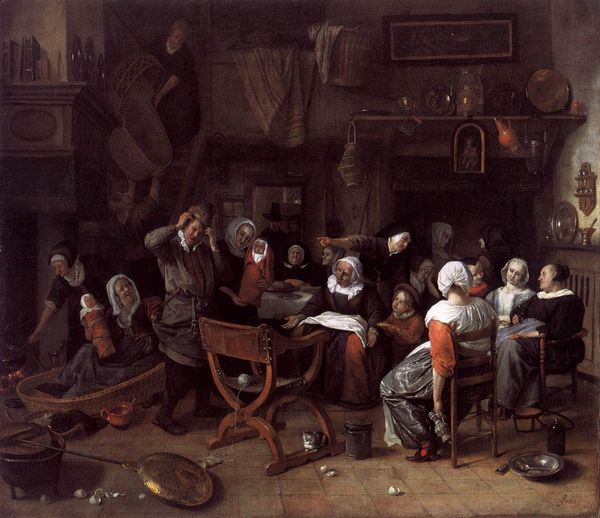
painting, oil-paint
#
portrait
#
baroque
#
dutch-golden-age
#
painting
#
oil-paint
#
group-portraits
#
genre-painting
#
realism
Dimensions: 70 x 80 cm
Copyright: Public domain
Curator: Adriaen van Ostade's "Portrait of a Family," created in 1654, gives us a glimpse into Dutch Golden Age society. The oil-on-panel work resides today in the Louvre in Paris. What strikes you initially about this large gathering? Editor: Well, aside from the sheer number of figures, there's a somber quality despite the children. Their clothing, mostly black with white accents, feels quite formal and reserved, but, given it’s a Dutch family portrait of the 17th century, the tone shouldn’t surprise me too much. Curator: Exactly. The prevalence of black isn't just about personal taste. The Reformation encouraged a degree of visual modesty, particularly in public life. That seriousness would also mirror, on one hand, the economic prosperity gained at the peak of the Dutch Golden Age; and, on the other hand, the constant war efforts, for example, during the First Anglo-Dutch War of 1652–1654. Editor: Yes, it does invite closer inspection of those subtle signs of wealth like the elaborate mantelpiece above what seems to be a fireplace, or the ornaments and framed painting hung over the doorframe. Interestingly, scattered on the floor are bits of foliage, leaves and flowers which read as transient reminders to consider life's fragility. Perhaps to soften what might have seemed stern or intimidating back then? Curator: It’s certainly a carefully constructed image. Van Ostade had a keen awareness of his patrons' expectations. This wasn't just about likeness, but about projecting social standing. He and the commissioner must have both aimed for an accurate and virtuous representation of family. The emphasis would be less on outward flashiness and more on quiet respectability and domestic order. Editor: The placement of the family members too must have been deeply considered. The seated figures in the foreground and the standing figures in the back, that conscious decision to arrange family relations according to a visual and social hierarchy... all meant to convey more than what's readily visible. Curator: Precisely. As a genre painting, even the apparent candidness is constructed. "Portrait of a Family" serves not just as a record, but as an affirmation of social norms and personal values. It shows how deeply connected artistic trends are with the period’s social circumstances. Editor: Well, my takeaway from that dive into van Ostade’s portrait is just how potent symbolism can be when attempting to communicate identity, then and now.
Comments
No comments
Be the first to comment and join the conversation on the ultimate creative platform.
